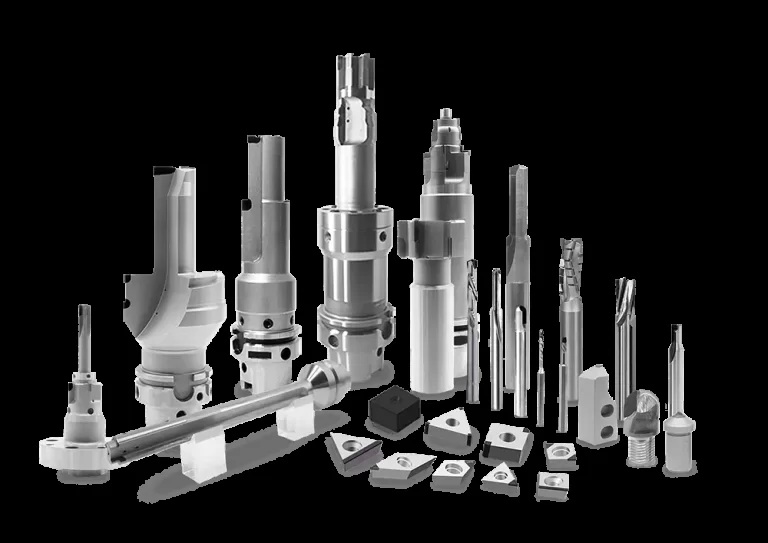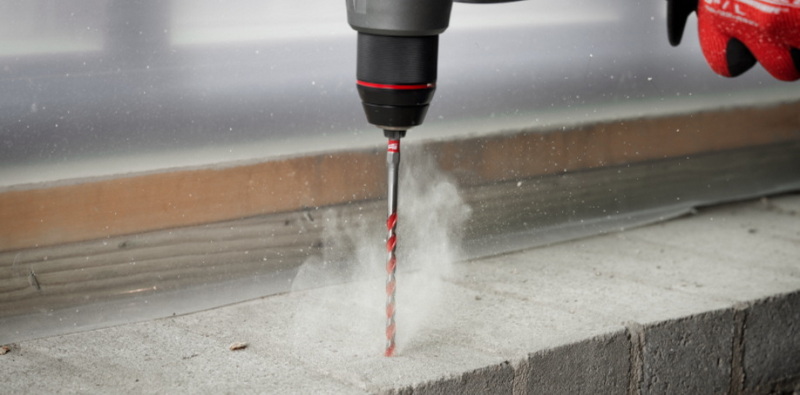Content Menu
● Introduction to Diamond Carbide
● Material Properties of Diamond Carbide
>> Key Characteristics
● Manufacturing Processes
>> Sintering and Bonding
>> Quality Control
● Industrial Applications of Diamond Carbide Tools
>> Oil and Gas Drilling
>> Precision Machining
>> Mining and Tunneling
>> Construction and Demolition
>> Electronics and Semiconductor Manufacturing
● Diamond Carbide vs. Conventional Carbide: A Comparison
● Innovations in Diamond Carbide Technology
>> Nano-Structured Coatings
>> Gradient Transition Layers
>> 3D Printing and Additive Manufacturing
>> AI-Optimized Tool Designs
● Challenges and Solutions
>> Cost Considerations
>> Brittleness in Thin Tools
>> Machining Ferrous Materials
● Environmental Impact and Recycling
>> Sustainable Manufacturing
>> Recycling Diamond Carbide Tools
● Conclusion
● FAQ
>> 1. How do I maintain diamond carbide tools?
>> 2. Can diamond carbide cut ferrous metals?
>> 3. What materials are unsuitable for diamond carbide?
>> 4. How are diamond carbide tools recycled?
>> 5. What's the future of diamond carbide technology?
● Citations:
Diamond carbide industrial products have become the gold standard for high-performance cutting and drilling across a wide range of industries. By merging the world's hardest material—diamond—with the toughness and resilience of tungsten carbide, engineers and manufacturers have created tools that can withstand the most demanding environments, from deep oil wells to precision aerospace machining. This article explores what makes diamond carbide so exceptional, how it is manufactured, its industrial applications, and why it is the material of choice for advanced cutting and drilling operations.

Introduction to Diamond Carbide
Diamond carbide industrial products represent a fusion of two of the most important materials in modern engineering. Diamond, with its unrivaled hardness, and tungsten carbide, known for its toughness and wear resistance, are combined to create tools that can cut, drill, and shape materials previously considered unworkable.
The result is a family of products—ranging from drill bits and saw blades to mining picks and machining inserts—that are essential in industries such as oil and gas, mining, construction, and advanced manufacturing.
Material Properties of Diamond Carbide
Key Characteristics
Diamond carbide industrial products are engineered to deliver exceptional performance under extreme conditions. The blend of diamond and carbide imparts several critical properties:
- Unmatched Hardness: Diamond carbide achieves a Vickers hardness of 2,800–3,200 HV, far surpassing conventional tungsten carbide (1,500–1,800 HV) and rivaling natural diamond.
- Superior Wear Resistance: Diamond coatings can reduce tool wear by up to 300% compared to uncoated carbide, significantly extending service life in abrasive environments.
- Thermal Conductivity: With a thermal conductivity of up to 2,000 W/m·K, diamond dissipates heat rapidly, preventing tool deformation during high-speed operations.
- Fracture Toughness: Polycrystalline diamond (PCD) layers bonded to carbide substrates resist chipping and cracking under heavy loads and impacts.
These properties make diamond carbide tools ideal for applications where other materials would quickly fail.
Manufacturing Processes
The production of diamond carbide industrial products is a sophisticated process that requires advanced technology and precision engineering.
Sintering and Bonding
- Powder Metallurgy: Fine tungsten carbide powder is mixed with cobalt and diamond particles, then pressed into the desired shape.
- High-Pressure Sintering: The mixture is sintered at temperatures above 1,400°C under high pressure, bonding the diamond and carbide together.
- Coating Processes: Chemical vapor deposition (CVD) or physical vapor deposition (PVD) techniques are used to apply thin diamond layers onto carbide substrates, further enhancing wear resistance.
Quality Control
- Microscopy and X-ray Analysis: Ensure uniform distribution of diamond particles and absence of voids.
- Hardness and Toughness Testing: Each batch is tested to meet strict industrial standards.
These manufacturing steps are crucial for producing diamond carbide industrial products that meet the rigorous demands of modern industry.
Industrial Applications of Diamond Carbide Tools
Diamond carbide industrial products are indispensable in sectors where durability, precision, and efficiency are paramount.
Oil and Gas Drilling
Diamond carbide drill bits are the preferred choice for deep-well drilling, where they must penetrate extremely hard rock formations such as granite and shale. According to industry studies, diamond carbide bits offer:
- 40% Increase in Drilling Speed: Compared to traditional carbide bits.
- 50% Longer Lifespan: Reducing downtime and operational costs.
Precision Machining
In the automotive and aerospace industries, diamond-coated carbide tools are used for:
- High-Precision Machining: Achieving tolerances as tight as ±0.002 mm.
- Reduced Defect Rates: Lowering post-processing requirements by up to 15%.
Mining and Tunneling
Diamond carbide picks, cutting teeth, and tunnel boring machine (TBM) bits are essential for:
- Efficient Ore Extraction: Cutting through hard minerals like iron ore and quartz.
- Extended Tool Life: Diamond-carbide TBM bits can process up to 500 meters of granite before replacement, compared to 150 meters for standard carbide.
Construction and Demolition
Core drills and saw blades with diamond carbide tips are used to:
- Cut Reinforced Concrete: A 100 mm diamond carbide core bit can drill over 300 holes in 40 MPa concrete, while conventional carbide bits may fail after just 50 holes.
- Demolish Asphalt and Rebar: With minimal tool wear and high efficiency.
Electronics and Semiconductor Manufacturing
Diamond carbide tools are also used for:
- Precision Cutting of Silicon Wafers: Where tool wear and contamination must be minimized.
- Micro-Drilling of PCB Boards: Achieving clean, accurate holes at high speeds.

Diamond Carbide vs. Conventional Carbide: A Comparison
| Property | Diamond Carbide | Conventional Carbide |
| Hardness | 2,800–3,200 HV | 1,500–1,800 HV |
| Heat Resistance | Stable up to 800°C | Degrades above 600°C |
| Cutting Speed | 2–3× faster in hard materials | Limited by wear |
| Cost | Higher initial cost | Lower upfront cost |
| Lifespan | 3–5× longer | Requires frequent replacement |
Case Study:
In a German automotive plant, switching to diamond carbide end mills reduced tool changes from 8 to 2 per shift, saving €12,000 monthly in downtime and maintenance.
Innovations in Diamond Carbide Technology
Nano-Structured Coatings
Recent advances in chemical vapor deposition (CVD) allow for the application of nano-structured diamond coatings, which:
- Enhance Wear Resistance: By creating a uniform, ultra-hard surface.
- Improve Adhesion: Preventing delamination during high-stress operations.
Gradient Transition Layers
Patented composites, such as those described in CN1016711B, use cobalt-rich transition zones to:
- Prevent Delamination: During impact drilling.
- Increase Tool Toughness: By providing a gradual transition between diamond and carbide layers.
3D Printing and Additive Manufacturing
Additive manufacturing techniques now allow for:
- Complex Tool Geometries: Such as helical coolant channels in drill bits.
- Improved Heat Dissipation: Enhancing tool life and cutting performance by up to 25%.
AI-Optimized Tool Designs
Artificial intelligence and machine learning are being used to:
- Optimize Tool Geometries: For specific materials and cutting conditions.
- Predict Tool Wear: Allowing for proactive maintenance and reduced downtime.
Challenges and Solutions
Cost Considerations
While diamond carbide tools have a higher upfront cost (2–4× that of standard carbide), their extended lifespan and reduced downtime often result in lower overall operating expenses. For example:
- A €800 Diamond Carbide Saw Blade: Can cut 10,000 sheets of carbon fiber, compared to €200 for a carbide blade that manages just 2,000 sheets.
Brittleness in Thin Tools
Ultra-fine diamond grains (0.2–0.5 μm) in advanced composites, such as those described in CN110026220B, help:
- Mitigate Fracture Risks: In thin drill bits and cutting tools.
- Improve Flexibility: Without sacrificing hardness.
Machining Ferrous Materials
Diamond carbide is less effective on ferrous metals due to chemical reactions at high temperatures. Solutions include:
- Lower Cutting Speeds: To reduce heat buildup.
- Use of Coolants: To extend tool life.
Environmental Impact and Recycling
Sustainable Manufacturing
- Reduced Waste: Longer tool life means fewer tools are discarded, reducing industrial waste.
- Efficient Resource Use: Advanced manufacturing techniques minimize material loss during production.
Recycling Diamond Carbide Tools
Diamond carbide industrial products can be recycled through specialized processes:
- High-Temperature Reclaiming: Recovers tungsten carbide and diamond particles for reuse.
- Closed-Loop Systems: Many manufacturers now offer tool recycling programs, further reducing environmental impact.
Conclusion
Diamond carbide industrial products stand at the forefront of cutting and drilling technology. Their unique combination of hardness, toughness, and thermal stability enables them to tackle the world's toughest materials with unmatched efficiency and precision. From deep oil wells to high-tech semiconductor fabs, diamond carbide tools are essential for modern industry. As technology advances, innovations in nano-coatings, additive manufacturing, and AI-driven design will ensure that diamond carbide remains the material of choice for the most demanding applications.

FAQ
1. How do I maintain diamond carbide tools?
- Answer: Clean diamond carbide tools with ultrasonic baths to remove embedded particles. Avoid overheating (above 800°C) to prevent graphitization and loss of hardness. Store tools in dry, stable environments to minimize corrosion.
2. Can diamond carbide cut ferrous metals?
- Answer: Yes, but with limitations. Diamond carbide can cut ferrous metals at low speeds with sufficient coolant. However, high temperatures can cause chemical reactions that degrade the diamond, so it is generally better suited for non-ferrous and composite materials.
3. What materials are unsuitable for diamond carbide?
- Answer: Soft plastics and pure copper can cause excessive tool loading and premature wear. Diamond carbide is best used on hard, abrasive, or composite materials.
4. How are diamond carbide tools recycled?
- Answer: Specialized recycling facilities use high-temperature processes to reclaim tungsten carbide and diamond particles. Many manufacturers offer closed-loop recycling programs for used tools.
5. What's the future of diamond carbide technology?
- Answer: The future includes AI-optimized tool geometries, self-sharpening nano-coatings, and environmentally friendly manufacturing processes. Research is ongoing into new composites and additive manufacturing techniques to further enhance performance.
Citations:
[1] https://www.sciencedirect.com/science/article/abs/pii/0257897294023700
[2] https://www.sciencedirect.com/science/article/pii/S0043164822000916
[3] https://benchmarkabrasives.com/blogs/bits/choosing-between-carbide-and-diamond-bits
[4] https://shop.leitz.org/en_gb/blog-which-is-better-for-tipping-your-tools-diamond-or-carbide
[5] https://patents.google.com/patent/US6454027B1/en
[6] https://grafhartmetall.com/en/diamond-coating-for-carbide-parts-redefining-production-performance-in-the-automotive-industry/
[7] https://patents.google.com/patent/CN1016711B/zh
[8] http://bsptools.com/diamond-core-bits-vs-carbide-which-is-the-right-tool-for-you/
[9] https://www.tutorchase.com/answers/igcse/chemistry/what-are-the-uses-of-diamond-in-various-industries
[10] https://www.industrystock.cn/zh/companies/hua-xue-gong-ye/yan/tan-hua-wu
[11] https://www.gemtool.com.tw/en/
[12] https://www.carbide-part.com/blog/tungsten-carbide-hardness-vs-diamond/
[13] https://patents.google.com/patent/CN110026220B/zh
[14] http://europarl.primo.exlibrisgroup.com/discovery/fulldisplay?docid=cdi_proquest_journals_2667855765&context=PC&vid=32EPA_INST%3A32EPA_V1&lang=en&search_scope=MyInst_and_CI&adaptor=Primo+Central&tab=Everything&query=sub%2Cexact%2C+Diamond-like+carbon+%2CAND&mode=advanced&offset=20
[15] https://ukam.com/why-use-diamond/
[16] https://patents.google.com/patent/CN108472626B/zh
[17] https://www.drillbitwarehouse.com/product-category/diamond-carbide-plate-cutters/
[18] https://www.sciencedirect.com/science/article/pii/025789729190013M
[19] https://patents.google.com/patent/CN101568490A/un
[20] https://gdptooling.com/diamond-v-carbide-comparing-the-costs/
















